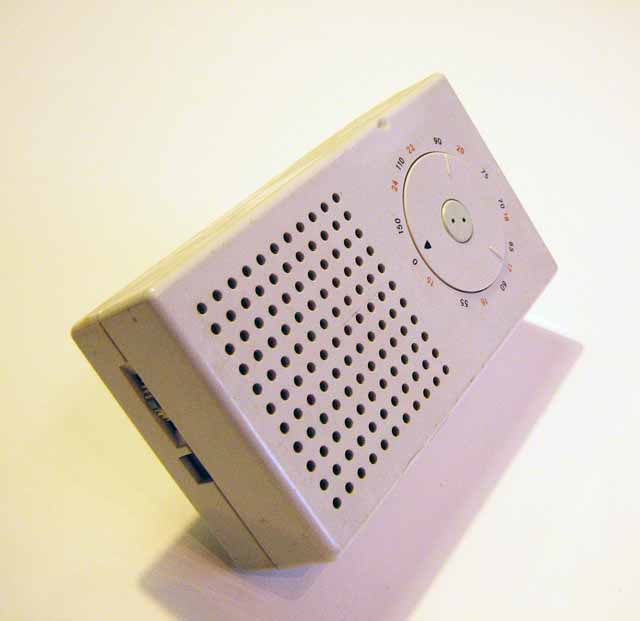1958 Braun T3
Micro-table / coat pocket radio, thermoplastic cabinet
5 15/16 x 3 5/16 x 1 5/8 inches / 151 x 84 x 41 mm
2-band MW/LW radio, six transistors (OC44, 2x OC45, OC75 2x OC72) + OA70 diode
Superheterodyne circuit
Four 1.5-volt "AA" cells
Braun's first pocket transistor radio, designed by Dieter Rams and produced in 1958. An identical-looking model, the T31, was introduced in 1960 and employed seven transistors.
Much has been made in recent years about the Braun T3 having been the design inspiration for the original Apple iPod — that's pretty clear by now: Apple's chief industrial designer Jon Ive is well known for his love of Dieter Rams's designs, and a number of his Apple product designs bear unmistakable direct influences from classic Braun product designs.
New York's Museum of Modern Art displays the Braun T3 in its Industrial Design gallery on a rotating basis along with several other early Braun transistor radios.
This example's very fragile dial scale numbers were preserved by the radio having been stored in its leather carry case for all those years. And the pale green painted dial center has been preserved as well.
The (black-numbered) MW band and the (red-numbered) LW band are calibrated in kHz/10: the black 55—150 numbers on the dial are 550-1500 kHz, and the red 15—24 numbers are 150-240 kHz.
(Braun, like Apple, has a dedicated base of aficionados, so I may not win any points among Braun design fans here when I ask:
Why is the T3's tuning dial so difficult to read?
A radio's tuning dial is something that should be understood immediately, like a home thermostat or a car's gas gauge — almost every single radio ever produced in the analog age met this requirement, a design element so well-understood that it never even had to be articulated. But the T3's tuning dial requires study: the frequency numbers are divided by ten, and the MW band impossibly has a zero on its scale. The dial's tuning pointer, a painted black triangle, is made much less prominent by the two thumb ledges set equidistant from it on the dial. And while the MW and LW numbers have different color markings on the dial, they are mixed together on the same circular line, making for a confusing hodge-podge of numbers divided by ten. All this confusion doesn't seem to hold to Dieter Rams's "ten commandments for good design" on several points (2, 4 and 5 at the least.)
|







